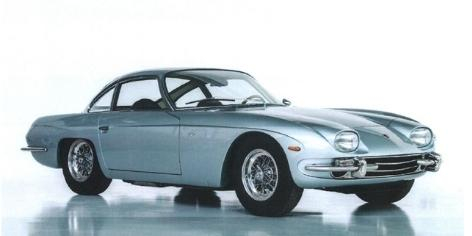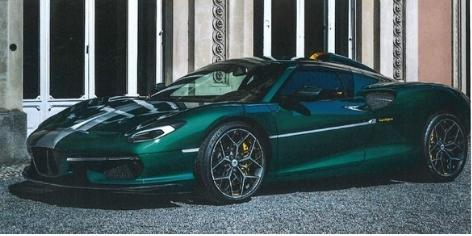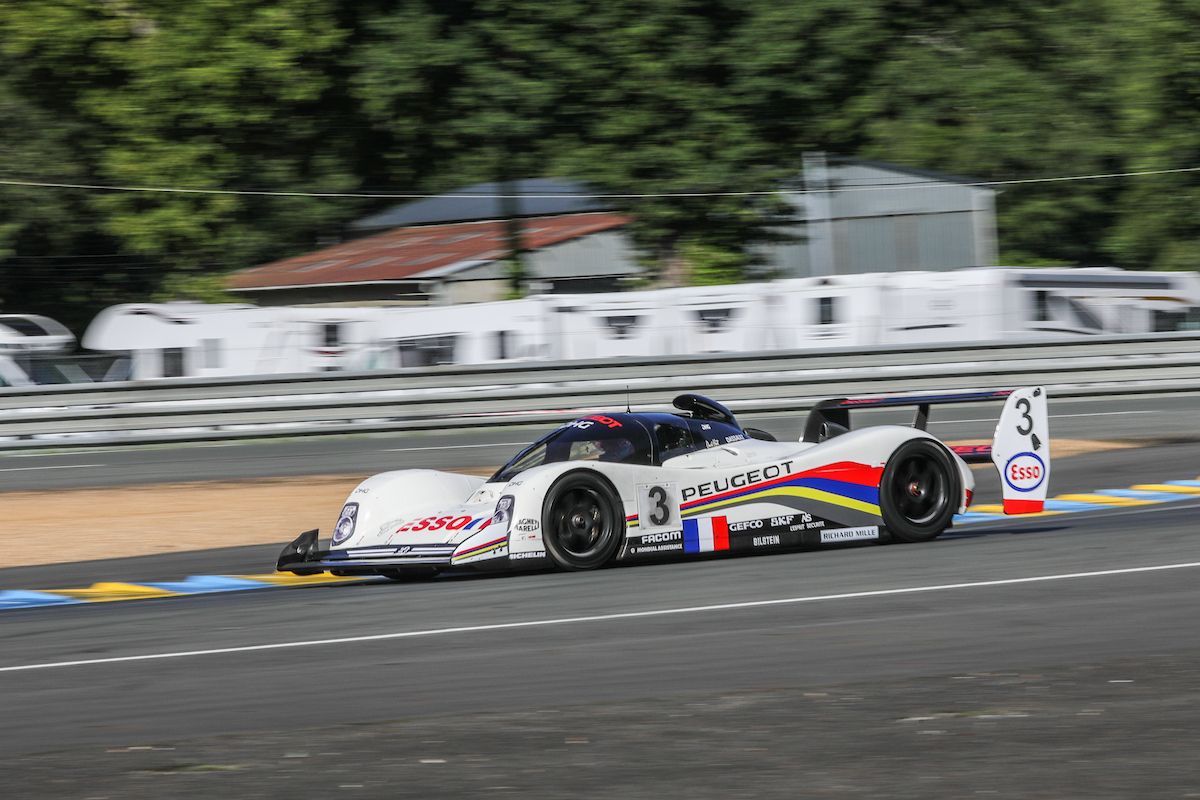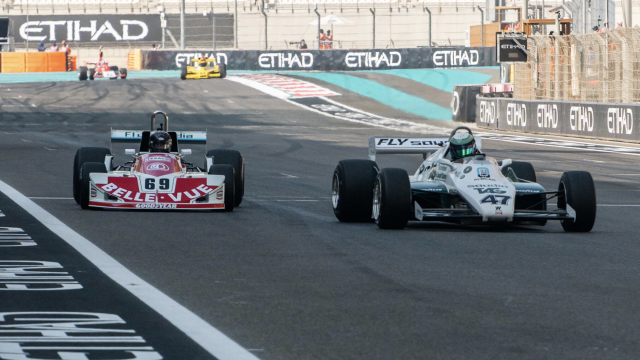Chantilly Arts & Elegance puts Le Mans in the spotlight
Three classes will pay tribute to Roland D’Ieteren, who was killed by the COVID: the cars of the Touring bodywork from before the war, after the war and since the 2000s. This great boss of the Belgian car group was also the owner of one of the few coachbuilders still existing today. The American open sports car class ‘Tribute to Betty’ is also dedicated to another friend of Peter Auto, Betty Kadoorie.
Prestigious brands will be honoured. Bugatti with two classes: the 55 types and the Revival, or another for the Italian manufacturer De Tomaso with its sports and competition cars of yesterday and today. Another will feature racing cars from 1905 to 1925. Finally, to celebrate the centenary of the 24 Hours of Le Mans, two classes will highlight speed and aerodynamics on the Hunaudières and the performance index race.
The Le Mans 24 Hours Legend: Speed & Aerodynamics on the Mulsanne Straight
Car : Peugeot 905 Evo Bis – 1992
The Peugeot 905 Evo 1 bis is a sports-prototype racing car of the so-called “3.5 L Sports” generation. It underwent several aerodynamic and mechanical evolutions and won the Le Mans 24 Hours in 1992 and 1993 and was World Sports Car Champion in 1992. The Peugeot 905 took part in 17 races between September 1990 and June 1993 and won 9 times. It was a car that was developed, conceived and shaped according to the developments of its time. Since the introduction of the 3.5L formula, the World Sports Car Championship had begun to focus on speed rather than endurance. A new Grand Prix style of racing therefore pushed Peugeot to further abandon the traditional design principles of an endurance car.
The Le Mans 24 Hours Legend: The Index of Performance Race
Car : Panhard Monopole X86 – 1956

The Panhard Monopole X86 is a product of its time. Since 1926, the 24 Hours of Le Mans has been characterised by the performance index classification, linked to engine capacity and the distance covered. In the post-war years, this classification became a private ground for French manufacturers of small capacity cars with advanced aerodynamic specifications, like this Monopole. Equipped with a 750cc Panhard engine, it raced three times at Le Mans between 1956 and 1958. Its racing career continued in the years after it was modified by Monopole with an 850cc engine. Team Monopole was the race team officially supported by Panhard from 1956, following the 1955 Le Mans accident and Panhard’s withdrawal from competition.
The Touring bodywork shop (Pre-war)
Car : Alfa Romeo Tipo 256 – 1939

The Lamborghini 350 GT was presented at the 1964 Geneva Motor Show. The 350 GT was Lamborghini’s first production car. Aesthetically impressive and mechanically powerful, it was capable of a top speed of 265 km/h. At the time, the high level of luxury and finish immediately attracted customer interest and Lamborghini began selling cars to some of Italy’s wealthiest sportsmen. Only 131 examples of the 350 GT were built at Lamborghini’s new Sant’Agata factory over the next three years, before the model was phased out in favour of the slightly redesigned 400 GT.
The touring bodywork shop (Post-war)
Car : Lamborghini 350 GT – 1966

The Lamborghini 350 GT was presented at the 1964 Geneva Motor Show. The 350 GT was Lamborghini’s first production car. Aesthetically impressive and mechanically powerful, it was capable of a top speed of 265 km/h. At the time, the high level of luxury and finish immediately attracted customer interest and Lamborghini began selling cars to some of Italy’s wealthiest sportsmen. Only 131 examples of the 350 GT were built at Lamborghini’s new Sant’Agata factory over the next three years, before the model was phased out in favour of the slightly redesigned 400 GT.
The touring bodywork shop (Cars from the ‘2000s)
Car : Touring Superleggera Arese RH95 – 2021

In 2021, Carrozzeria Touring Superleggera celebrated its 95th anniversary by unveiling the Arese RH95, a car with lines inspired by the “streamline” philosophy dear to the Milanese coachbuilder. Equipped with a 3.9-litre V8 engine developing 720 horsepower in a rear mid-engine position, the Arese RH95 is a first for Touring. The car owes its name to the street where Touring Superleggera’s Milan headquarters are located, Via Arese, and is composed of the number 95, which logically refers to the company’s 95th anniversary, and the letters “RH”, the initials of the first customer’s name and surname for this exclusive model. From a technical point of view, this is the third model in the “Aero” range and echoes the spirit of the Disco Volante Coupé (2012) developed around the Alfa Romeo 8C Competizione, and the Aero 3 (2020) designed around the Ferrari F12. The Arese RH95, which is based on the Ferrari F8 Tributo chassis, takes its carbon fibre bodywork design from the Aero 3.






Comments
Log in to comment the article